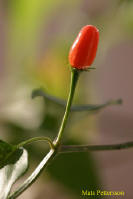Browsing through the chileman.org database, I found the infamous Puta Pario, a damn hot chile native to my country.
But the photo differs from what I know
This is the photo in the chileman.org database:

And this is what we call Puta Pario:

As you can see, it's not only longer, but also a lot more pointy...
I've been growing plants since being a small child, and always heard of it as "Puta Pario"... now I'm a little confused.
But the photo differs from what I know

This is the photo in the chileman.org database:

And this is what we call Puta Pario:

As you can see, it's not only longer, but also a lot more pointy...
I've been growing plants since being a small child, and always heard of it as "Puta Pario"... now I'm a little confused.
